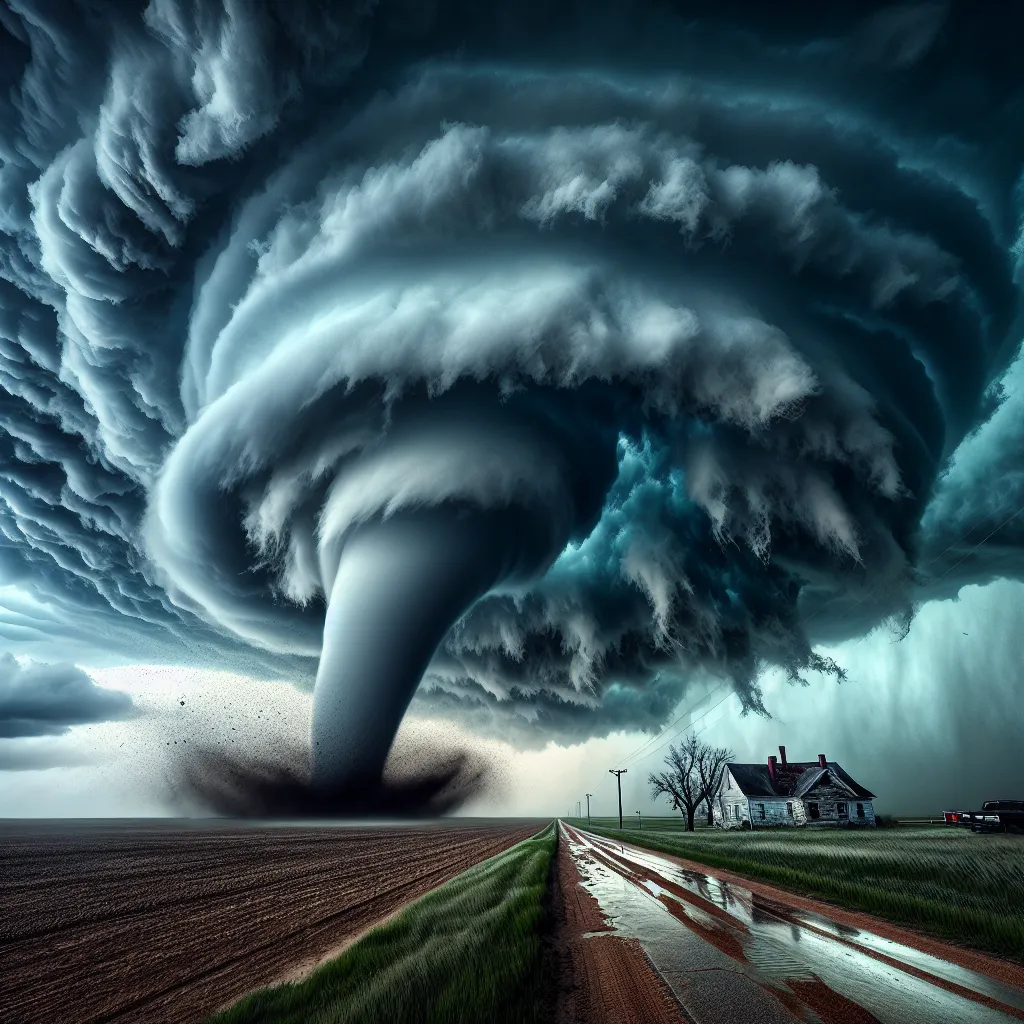In Tornado Alley, always be on high alert. Tornadoes are fascinating yet perilous, often appearing unexpectedly. They’re majestic and powerful but up close, they’re Earth’s most violent force. Tornado Alley, sweeping through North America’s plains, is a witness to countless tales of survival.
One storm chaser, Roger, knows this well. On May 11, 2000, chasing a tornado seemed like hunting a beast; exciting but dangerous. While filming, his encounter turned severe as winds exceeding 100 mph hit him, covering him in mud. Roger’s record of chasing 21 tornadoes in a year underscores the risks and awe of these natural phenomena.
More than a thousand tornadoes strike the U.S. yearly, with Nebraska, Texas, Kansas, and Oklahoma being the most affected. Here, cold Canadian air meets hot Gulf air, sparking violent storms that attract avid storm chasers. Experienced chasers like Jeff Petrovsky understand the hazards. Despite their expertise, even they face danger, like being caught in 80 mph crosswinds near Alma, Kansas.
Chasing storms can be thrilling but also entails long, uneventful hours on empty roads. Jeff’s fiancée, Catherine, experienced all this on her first chase, encountering multiple tornadoes in one day, a rare thrill even for veterans.
But it’s not just chasers who face risks. The Taylor family in Brady, Nebraska, found themselves directly in the path of a tornado. As the tornado approached, Sue Taylor’s first thought was, “We’re all going to die.” The storm left behind extensive damage—cars uprooted, parts of their home scattered, yet miraculously, fewer personal injuries.
Tornadoes don’t discriminate, striking remote areas and busy cities alike. Oklahoma City, May 1999, saw an unprecedented F5 tornado. Reports from ground chasers helped meteorologist Gary England issue crucial warnings, saving lives despite extensive destruction.
Scientists like Dr. Joshua Wurman at Oklahoma University gather mobility data to understand these storms. Their close encounters reveal tornadoes’ raw power, like the May 3rd tornado that produced 300 mph winds and devastated Bridge Creek, Oklahoma, despite real-time warnings and expert predictions.
Personal tragedies abound in Tornado Alley. Doug Thornton died saving others during the Fort Worth tornado, which shattered 3,000 windows and caused $300 million in damage. His sacrifice is a grim reminder of the tornadoes’ deadly impact.
Across North America, tornadoes continue their path of destruction. In July 2000, Pine Lake, Alberta, saw a deadly twister strike a campsite, leaving unimaginable devastation in its wake. Witnesses recall the terror as recreational vehicles were tossed about, resulting in multiple fatalities and extensive injuries.
Tornado Alley encapsulates the unpredictable fury of nature. From remote farms to bustling cities, the tales of survival, heroism, and loss highlight the perils faced by those living in or near the path of these formidable storms. Though fascinating to chase, tornadoes demand respect and caution, reminding us of nature’s unmatched power.






